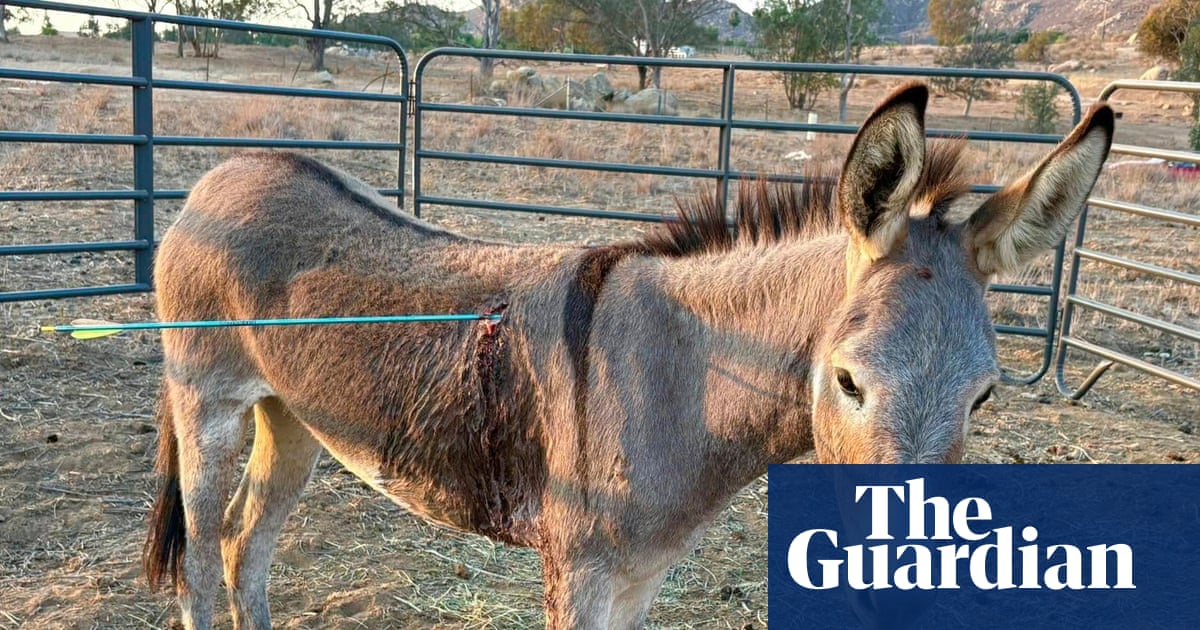Deserts are spreading across great tracts of Britain, yet few people seem to have noticed, and fewer still appear to care. It is one of those astonishing situations I keep encountering: in which vast, systemic problems – in this case, I believe, covering thousands of square kilometres – hide in plain sight.
I realise that many people, on reading that first sentence, will suspect I’ve finally flipped. Where, pray, are those rolling sand dunes or sere stony wastes? But there are many kinds of desert, and not all of them are dry. In fact, those spreading across Britain are clustered in the wettest places. Yet they harbour fewer species than some dry deserts do, and are just as hostile to humans. Another useful term is terrestrial dead zones.
What I’m talking about are the places now dominated by a single plant species, called Molinia caerulea or purple moor-grass. Over the past 50 years, it has swarmed across vast upland areas: in much of Wales, on Dartmoor, Exmoor, in the Pennines, Peak District, North York Moors, Yorkshire Dales and many parts of Scotland. Molinia wastes are dismal places, grey-brown for much of the year, in which only the wind moves. As I know from bitter experience, you can explore them all day and see scarcely a bird or even an insect.
Not that you would wish to walk there. The grass forms high tussocks through which it is almost impossible to push. As it happens, most of the places that have succumbed to Molinia monoculture are “access land”. Much of the pittance of England and Wales in which we are allowed to walk freely has become inaccessible. In a great victory a fortnight ago, the supreme court ruled that we have a right to wild camp on Dartmoor. But on many parts of the moor, you wouldn’t want to exercise it. As soon as the grass takes hold, all opportunities for enjoyment and employment cease.
Molinia challenges the definition of an invasive species. The term is supposed to refer only to non-native organisms. But while it has always been part of our upland flora, it appears to have spread further and faster than any introduced plant in the UK, and with greater ecological consequences. It is uncontrolled by herbivores, disease or natural successional processes (transitions to other plant communities). In fact, it stops these processes in their tracks.
Given the scale of the problem, it is remarkably little studied and discussed. I cannot find even a reliable estimate of the area affected: the most recent in England is nearly 10 years old, and I can discover none for Wales or Scotland. But in the southern Cambrian Mountains alone, judging by a combination of my walks and satellite imagery, there appears to be a dead zone covering roughly 300 sq km, in which little but this one species grows. Most of central Dartmoor is now Molinia desert, and just as disheartening and hard to traverse.

Why is this happening? It seems to be a combination of forces. One is “headage payments”: subsidies that were issued in the second half of the 20th century, which paid farmers for the number of animals they kept. They created an incentive to cram the land with as many sheep and cattle as possible. This, in combination with burning moorland to produce fresh shoots for the livestock to eat, seems in some places to have pushed ecosystems beyond their tipping points. Even, as in parts of the Cambrians, where there have been no sheep grazing for 40 years, as there’s nothing left to eat (sheep will scarcely touch Molinia), there has been no recovery.
Another likely factor is nitrogen deposition. Nitrogen compounds rain down on Britain’s habitats at a rate of roughly 29kg per hectare per year. They are produced by livestock farming, traffic and industry. Drainage (largely for farming) also appears to accelerate the spread: Molinia thrives as peat dries out.
The Dartmoor ecologist and nature campaigner Tony Whitehead tells me that the degradation of peat caused by drainage, excavation, burning and grazing pressure is likely to be the primary accelerant. Burning in particular – carried out by sheep farmers on Dartmoor and Exmoor and by grouse shoots on northern English moors and in Scotland – favours the plant. While other species are destroyed, Molinia is protected by its deep roots and tussocks, which guard its buds.
Various solutions are proposed, but few are satisfactory. One approach is to blast the grass with the herbicide glyphosate. It works for a while, but leaves an even grimmer waste, likely to be colonised again by Molinia. Others propose yet more burning, and/or grazing with cattle or ponies: temporary “solutions” that look like blood-letting to cure anaemia. Whitehead has watched what happens: the animals graze around the edges of the Molinia, eating only small amounts, while continuing to knock back other plant species. After early summer, they won’t touch the stuff, as its nutritional value declines steeply. A new report by the government agency Natural England states that livestock grazing is not required to protect the main habitat type – blanket mire – that Molinia threatens.
Rewetting the land, by blocking drains and building bunds and perhaps, as one team is attempting, planting clumps of sphagnum moss among the grass, in order to restore the peat, seems to be the only means of reviving blanket mire. It also makes the land less prone to fire. In other places, we should be encouraging the return of trees, through planting and excluding livestock. Most of the areas overtaken by Molinia have a temperature and moisture range that would favour temperate rainforest: a vanishingly rare, rich and complex habitat. As the trees mature, they should shade out the grass. In some wet areas, I’d like to see the return of water-tolerant species such as alder, downy birch and willow, to restore upland carr, another rich and scarce habitat.
But anyone who wants to rewild upland ecosystems hits a wall of vested interests – mostly sheep farmers and grouse moor owners – who, like the commercial fishing sector, insist on doing the wrong thing until it destroys their own industry. Where is the urgent government programme? Where is there even official acknowledgment that we have a problem? To fix something, first you must see it.

.png) 3 months ago
56
3 months ago
56

















































